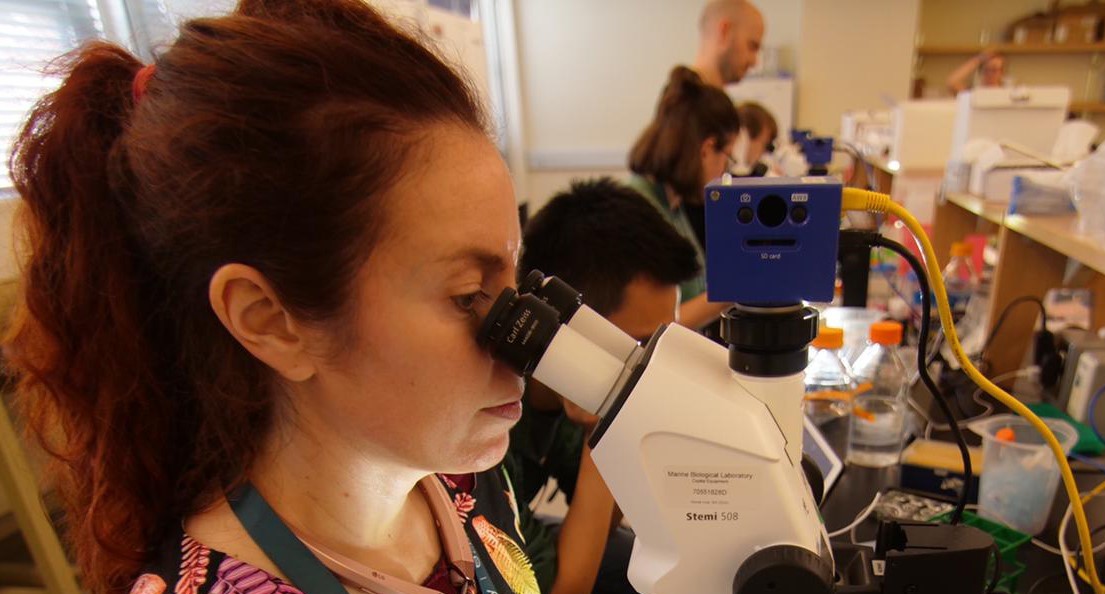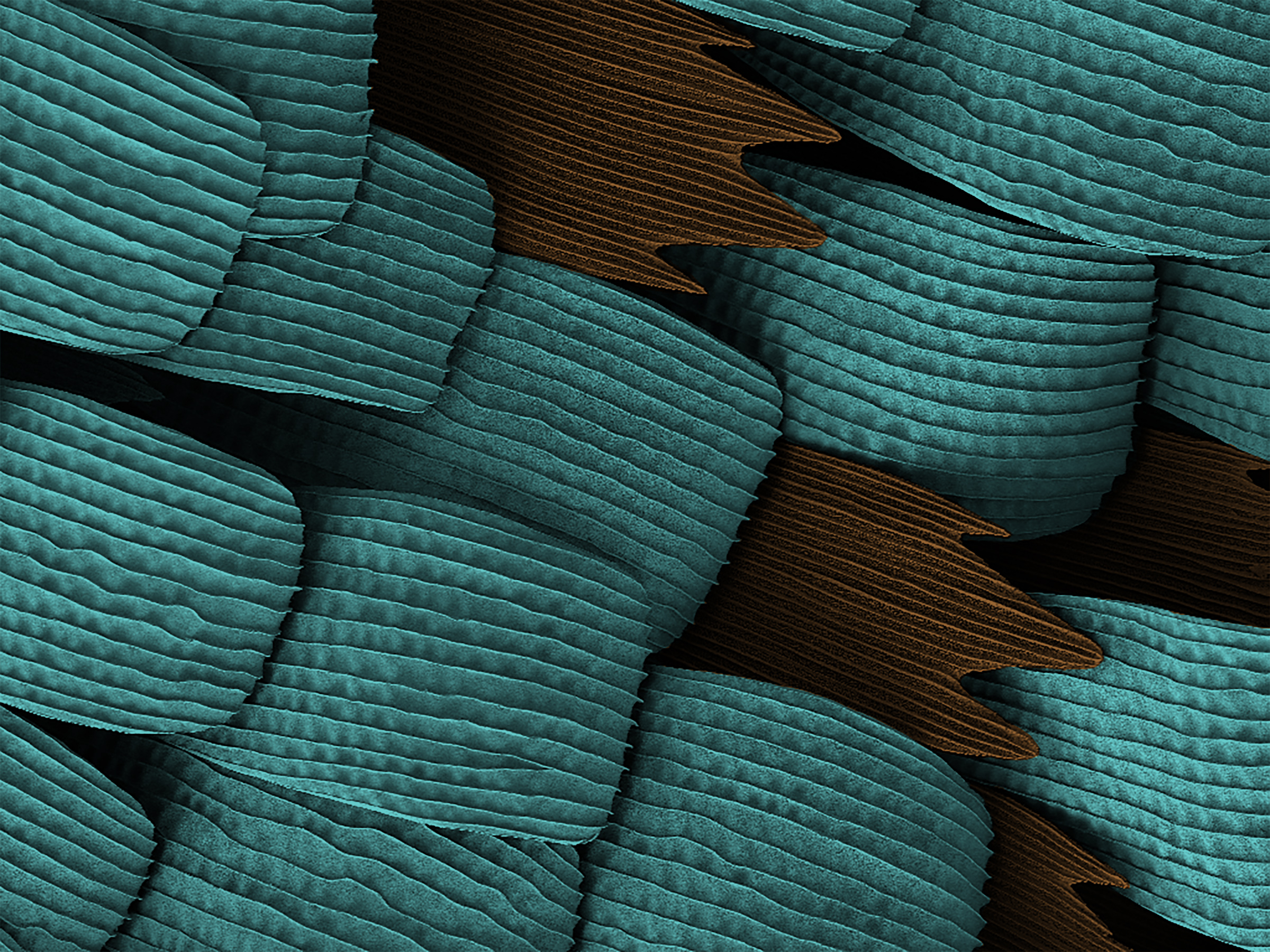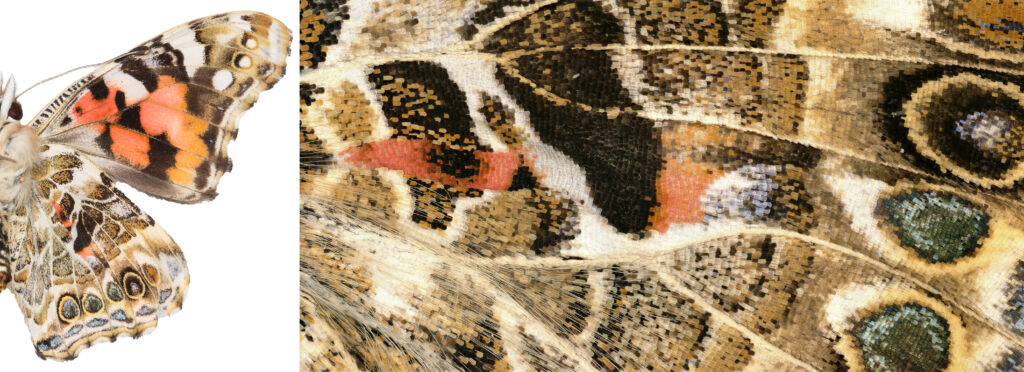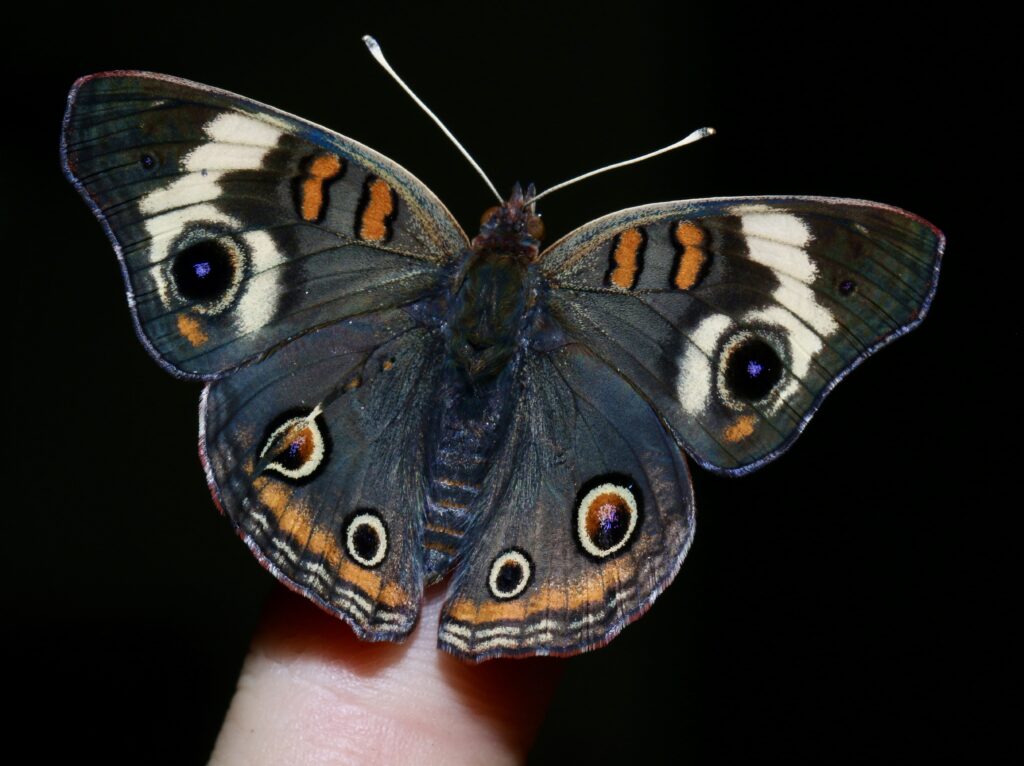The forewings and hindwings of butterflies and moths (Lepidoptera) are different from each other, with color patterns and morphologies that mediate a wide range of functions in flight, signaling, and protection.
To explore the genetics that determine these differences, a team including MBL Director Nipam Patel and Ph.D. candidate Aaron Pomerantz used CRISPR-Cas9 genome editing to disable a Hox gene, Ultrabithorax (Ubx), in two species of butterfly (Junonia coenia, Vanessa cardui) and a moth (Plodia interpunctella). In the resulting mutants, they found, the hindwings had transformed into forewings in some respects. This showed that Ubx is necessary for specifying many aspects of hindwing-specific identities, including morphology of wing scales, color patterns, and wing vein arrangement and structure.
The study, published this week, confirms that Ubx is a “master selector” of Lepidoptera hindwing identity, and suggests it acts on many gene regulatory networks involved in wing development and patterning.



